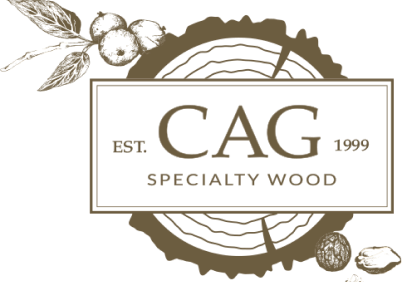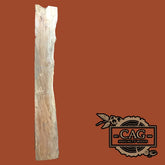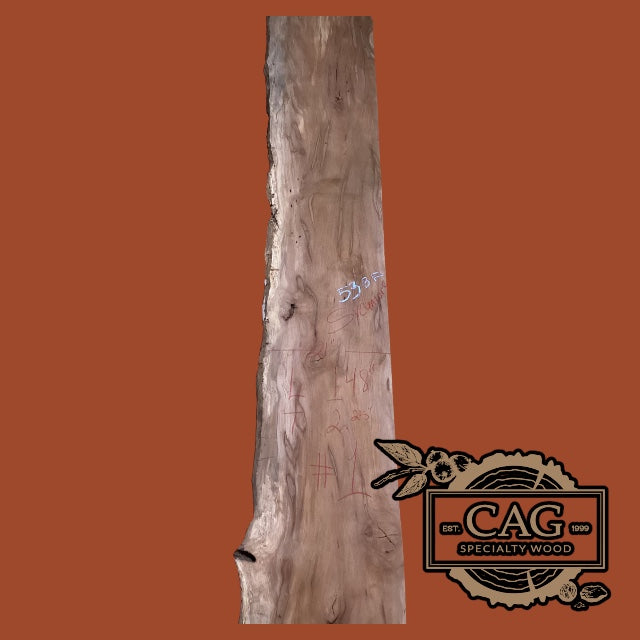
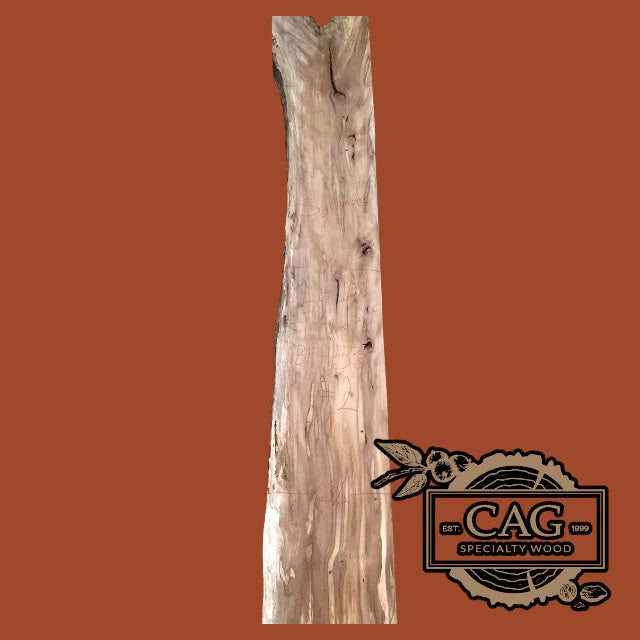
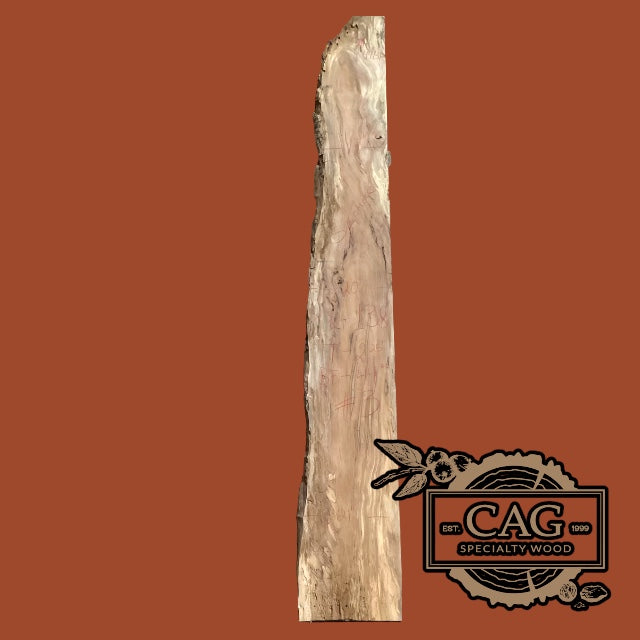
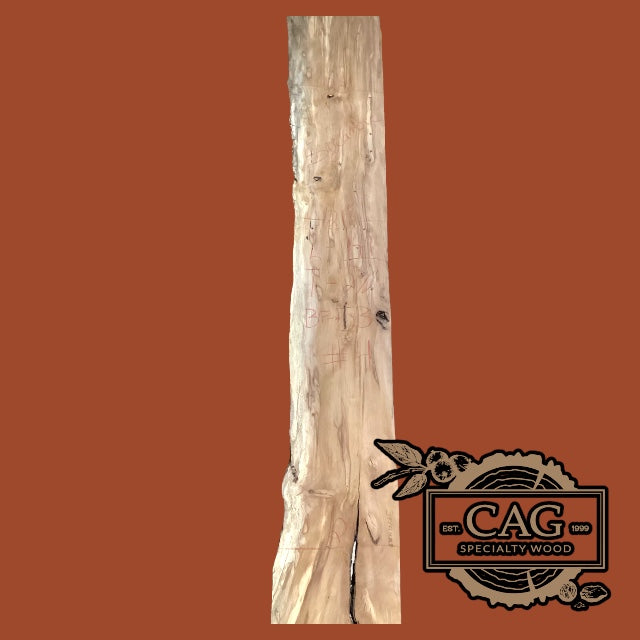



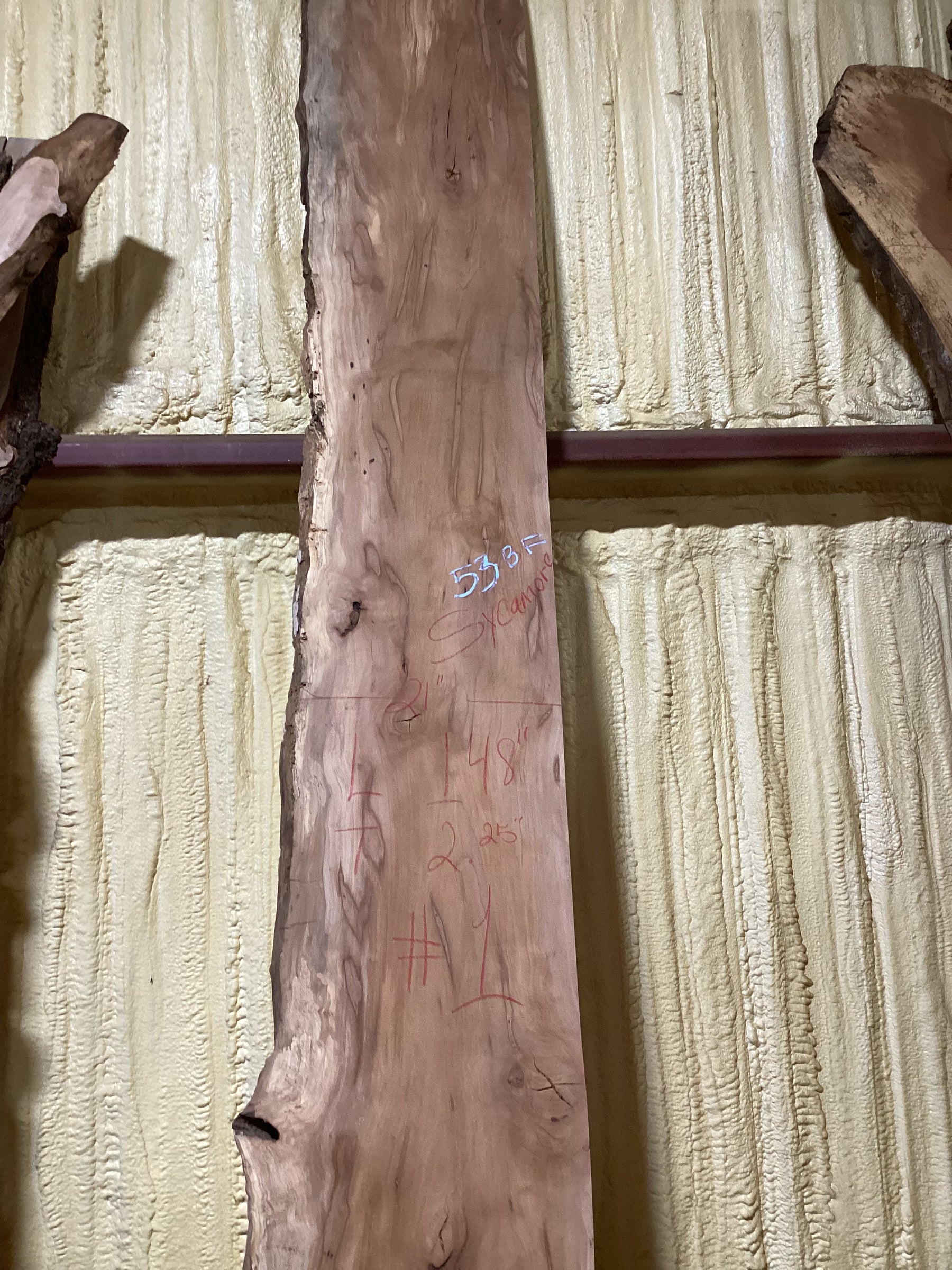
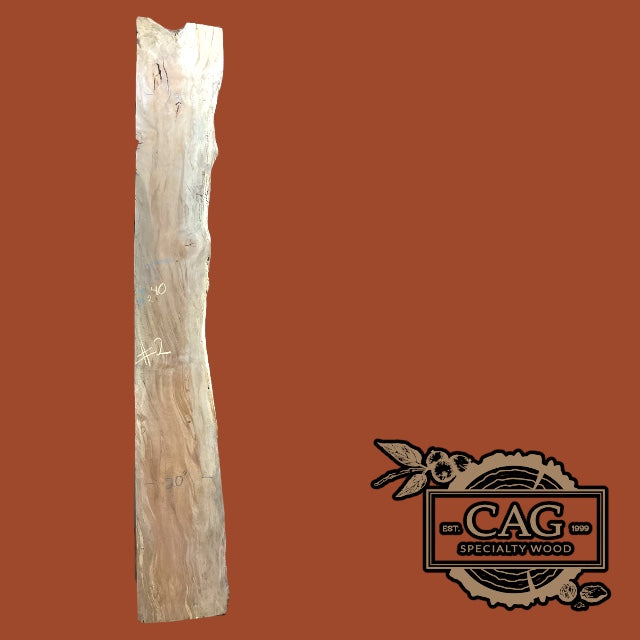
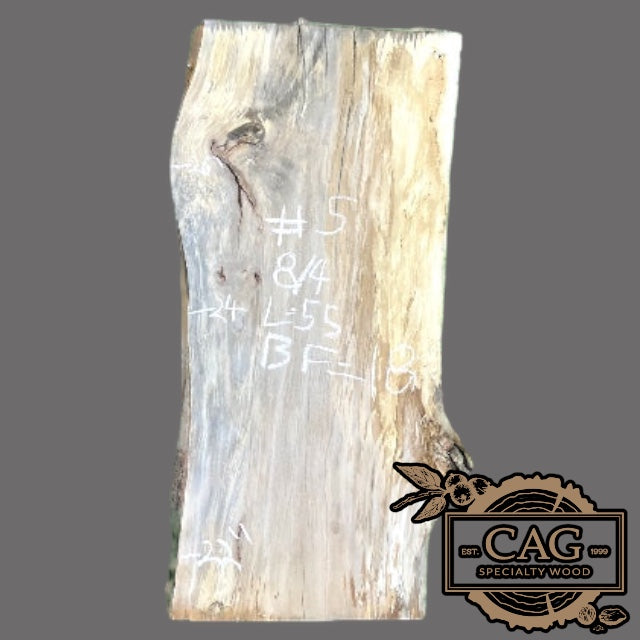
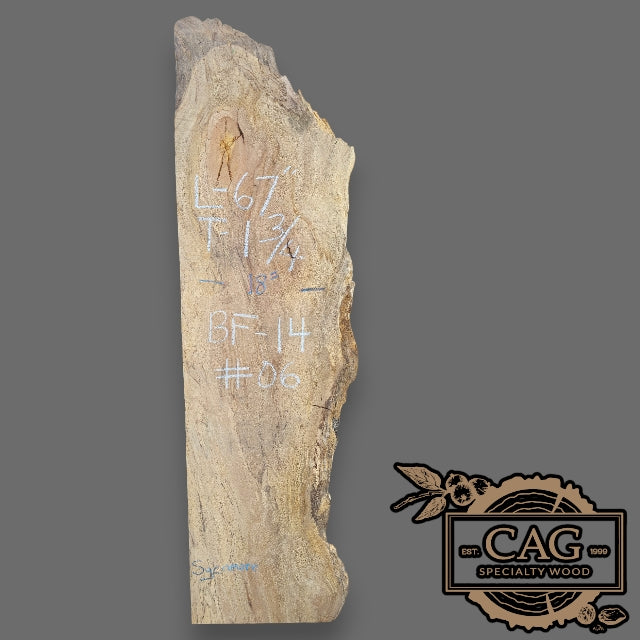
Sycamore Slabs
|
Common Name(s): Sycamore, American Plane Scientific Name: Platanus occidentalis Distribution: Eastern United States Tree Size: 75-120 ft (23-37 m) tall, 3-8 ft (1-2.4 m) trunk diameter Average Dried Weight: 34 lbs/ft3 (545 kg/m3) Specific Gravity (Basic, 12% MC): .46, .55 Janka Hardness: 770 lbf (3,430 N) Modulus of Rupture: 10,000 lbf/in2 (69.0 MPa) Elastic Modulus: 1,420,000 lbf/in2 (9.79 GPa) Crushing Strength: 5,380 lbf/in2 (37.1 MPa) Shrinkage: Radial: 5.0%, Tangential: 8.4%, Volumetric: 14.1%, T/R Ratio: 1.7 |
Color/Appearance: Similar to maple, the wood of Sycamore trees is predominantly comprised of the sapwood, with some darker heartwood streaks also found in most boards. (Though it is not uncommon to also see entire boards of heartwood too.) The sapwood is white to light tan, while the heartwood is a darker reddish brown. Sycamore also has very distinct ray flecks present on quartersawn surfaces—giving it a freckled appearance—and it is sometimes even called “Lacewood.”
Grain/Texture: Sycamore has a fine and even texture that is very similar to maple. The grain is interlocked.
Endgrain: Diffuse-porous; small to medium pores, numerous; solitary and in radial multiples and clusters; tyloses occasionally present, though not easily seen with lens; growth rings distinct due to lighter color of latewood and decreased pore frequency; medium to very wide rays easily visible without lens, noded, wide spacing; parenchyma rare or absent.
Rot Resistance: Sycamore is rated as non-durable to perishable regarding decay resistance, and is susceptible to insect attack.
Workability: Overall, Sycamore works easily with both hand and machine tools, though the interlocked grain can be troublesome in surfacing and machining operations at times. Sycamore turns, glues, and finishes well. Responds poorly to steam bending.
Odor: No characteristic odor.
Allergies/Toxicity: Besides the standard health risks associated with any type of wood dust, no further health reactions have been associated with Sycamore. See the articles Wood Allergies and Toxicity and Wood Dust Safety for more information.
Pricing/Availability: Usually moderately priced, though Sycamore is commonly sold as quartersawn boards, which can increase the cost.
Sustainability: This wood species is not listed in the CITES Appendices or on the IUCN Red List of Threatened Species.
Common Uses: Veneer, plywood, interior trim, pallets/crates, flooring, furniture, particleboard, paper (pulpwood), tool handles, and other turned objects.
Comments: Not to be confused with European Sycamore—which is actually just a species of maple (Acer pseudoplatanus)—Sycamore is sometimes referred to as “American Plane” in Europe.
Related Species:
- London Plane (Platanus x hybrida)
Sycamore Slabs
Sycamore Slab #2 - 144"x20"x2"
4050 Old Cornelia Hwy
Gainesville GA 30507
United States
Wood Calculator Section
Need Help Figuring out how much you need ?
One Board foot = 144 Cubic Inches
Example: If you need a piece of wood 12 inches wide, 1 inch thick and 24 inches long, that is equal to 2 board feet.
12 inches x 1 inch x 24 inches = 288 inches. 288/ 144 = 2 board feet

